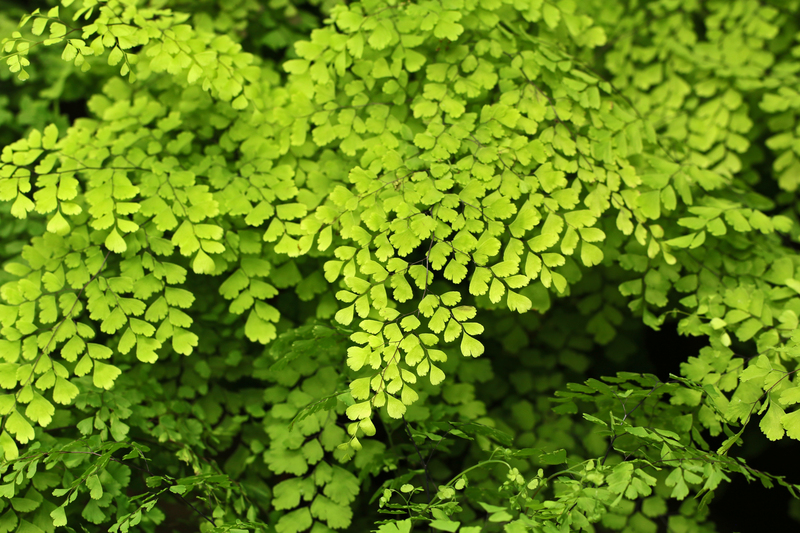Lawn Love Unlocked: Easy Steps to Your Best Yard Yet
Experience the joy of lush green grass and a thriving outdoor oasis with our ultimate guide: Lawn Love Unlocked. Whether you're a seasoned gardener or a first-time homeowner, achieving your best yard yet isn't a mystery--it's a matter of understanding what your lawn really needs. In this comprehensive article, we'll break down easy steps to transform patchy grass and weeds into an enviable, vibrant landscape.
Why Lawn Care is Essential
A great lawn is more than curb appeal. Healthy grass filters pollutants, supports biodiversity, and creates a welcoming space for family activities or relaxation. Pioneering your lawn journey with the right techniques can unlock year-round benefits, from increasing property value to enhancing your quality of life.
- Environmental Impact: Lawns cool the environment, reduce erosion, and improve air quality.
- Financial Value: A well-kept yard can raise the resale value of your property by up to 15%.
- Emotional Well-being: Spending time outdoors on plush turf reduces stress and boosts mood.

Step 1: Assess Your Lawn's Unique Needs
No two lawns are exactly alike. Start by identifying the key characteristics of your outdoor space:
- Soil Type: Is your soil sandy, clay, loam, or a mix?
- Sunlight: Does your lawn receive full sun, partial sunlight, or deep shade?
- Foot Traffic: Will your yard be a play area or a peaceful retreat?
Test your soil's pH (most grasses prefer 6.0-7.0). Simple test kits are available at garden centers and reveal vital information on fertility and nutrients your yard may need.
Step 2: Choose the Best Grass for Your Region
Warm-Season vs. Cool-Season Grasses
Your geographic location plays a big role in grass type selection. Here's an overview of what thrives best:
- Cool-Season Grasses (fescue, ryegrass, Kentucky bluegrass): Perfect for northern climates, these types green up early in spring and require less watering during cooler months.
- Warm-Season Grasses (Bermuda, Zoysia, St. Augustine): Ideal for southern yards, these can withstand heat and drought conditions.
Consulting local landscapers or cooperative extension services can ensure you plant the grass type best suited for your lawn love journey.
Seed, Sod, or Plugs?
- Seed: Budget-friendly and great for large areas, but generally takes longer to establish.
- Sod: Instant results, but higher upfront cost.
- Plugs: Best for filling in bare spots or transitioning to a new grass type gradually.
Step 3: Master the Art of Watering
Proper watering is the secret sauce to Lawn Love success. Overwatering leads to shallow roots and disease, while underwatering causes brown patches and sparse grass.
Watering Wisdom:
- Water early in the morning to reduce evaporation loss.
- Most lawns need 1-1.5 inches of water per week, including rainfall.
- Use a rain gauge or empty can to measure how much you're applying.
- Deep soakings are better than frequent, shallow watering.
Smart tip: If you leave footprints after walking across the grass, your yard likely needs a drink!
Step 4: Fertilize for a Thriving Lawn
Fertilization restores nutrients lost through mowing and environmental wear. Whether you want organic or synthetic, a balanced approach is key for achieving a lawn you'll love.
Seasonal Fertilization:
- Spring: Use a slow-release fertilizer to support vigorous new growth.
- Summer: Apply a lighter feeding with higher phosphorus levels for strong roots.
- Fall: Fertilize to prepare the lawn for winter dormancy; high potassium helps resilience.
Always follow package directions and avoid over-fertilization, which can burn your beautiful turfgrass.
Step 5: Mow Like a Pro
Correct mowing habits can be the difference between a so-so yard and your best lawn yet. Here's how to master your mower:
- Never cut more than one-third of the blade height at once. (The "one-third rule" prevents stress and promotes healthier growth.)
- Keep mower blades sharp for clean cuts and fewer infections.
- Alternate mowing patterns to avoid soil compaction.
- Leave clippings on the lawn (mulching) for free fertilizer and moisture retention.
Timing matters, too--wait until the grass is dry to avoid clumping and uneven mowing.
Step 6: Tackle Weeds and Pests Strategically
Nothing ruins a lush lawn like invasive weeds and destructive pests. Lawn Love Unlocked means keeping troublemakers at bay with a mix of prevention and precise treatments.
Effective Weed Control:
- Pre-emergent herbicides--Apply early spring to stop weeds before they sprout.
- Post-emergent solutions--For active weeds, use spot treatments to avoid damaging grass.
- Hand-pulling and regular mowing help keep weed populations down.
Managing Common Lawn Pests:
- Grubs: Watch for brown, spongy patches. Apply beneficial nematodes or targeted pesticides if infestations are severe.
- Chinch Bugs & Armyworms: Sudden yellowing? Consult your local garden center for appropriate control methods.
If you prefer eco-friendly lawn care, integrated pest management (IPM) and natural remedies (like neem oil or diatomaceous earth) are great options.
Step 7: Aerate and Dethatch for Optimal Growth
Over time, soil can become compacted and a layer of thatch (dead grass and roots) may build up, choking out healthy growth.
- Aeration: Perforating the soil with small holes allows air, nutrients, and water to reach roots more easily. Aerate in spring or fall, depending on grass type, for optimal results.
- Dethatching: Use a dethatching rake or power dethatcher when the thatch layer exceeds 1/2 inch.
Both practices rejuvenate your lawn, making it easier for new shoots and deeper roots to thrive--the true foundation of lawn love.
Step 8: Seasonal Yard Maintenance Checklist
Unlocking a legendary yard means active seasonal care:
Spring:
- Remove debris and fallen branches.
- Aerate and overseed if necessary.
- Begin regular mowing and watering schedule.
- Apply pre-emergent herbicide for weeds.
Summer:
- Water deeply but less frequently.
- Watch for pests and treat if needed.
- Mow higher to shade roots and reduce stress.
Fall:
- Rake leaves to prevent turf suffocation.
- Fertilize for winter.
- Overseed to repair bare spots.
Winter:
- Limit lawn traffic when frozen.
- Sharpen mower blades for the upcoming spring.
- Service irrigation systems.
Step 9: Add the Finishing Touches
The best lawn celebrates your unique style and practical needs. Here are ideas to elevate your landscape:
- Edging: Crisp edges around garden beds and walkways create a tidy, professional look.
- Mulch and Decorative Stone: Suppress weeds, retain soil moisture, and add a polished finish.
- Lighting: Solar or low-voltage lights highlight your healthy lawn after sunset.
- Planters and Garden Features: Integrate flower beds, bird baths, or cozy seating nooks for extra charm.
Personalizing your yard turns functional grass care into an extension of what you love most about home.
Lawn Love Troubleshooting: Solving Common Issues
Even with the best lawn care plan, occasional issues arise. Here are quick fixes for common problems:
- Brown Spots: Usually caused by pet urine, grubs, or drought. Identify the culprit then repair with overseeding or patch mix.
- Thinning Grass: Aerate and overseed in fall for thick regrowth.
- Moss Invasion: Low pH and poor drainage. Lime the soil and improve yard grading.
- Fungal Diseases: Reduce watering, improve airflow, and apply fungicide if necessary.
Lawn Love Unlocked: Frequently Asked Questions
Q: How often should I mow my lawn?
A: Most lawns do best with weekly mowing during peak season--adjust as growth dictates.
Q: Is it better to water in the morning or evening?
A: Morning is best. Watering at night can increase fungal problems.
Q: How soon can I walk on new grass?
A: Avoid heavy traffic until grass is at least 3 inches tall and well established (typically 3-4 weeks after seeding).
Q: Are organic lawn care products as effective?
A: Absolutely! Organic fertilizers, compost, and natural pest solutions can provide excellent results with safer environmental impact.

The Future of Lawn Care: Sustainable Yard Practices
Eco-friendly lawns are on the rise. Here's how you can be a part of the solution while maintaining stunning curb appeal:
- Reduce chemical usage by mulching clippings and using compost.
- Select native grass species or no-mow blends for less maintenance and lower water needs.
- Install rain barrels or drip irrigation systems to conserve water.
- Plant clover or wildflowers for pollinators and natural nitrogen.
Unlock Your Lawn's Potential Today!
A lush, inviting yard is within your reach! By following these easy steps, you'll not only unlock the secrets to expert lawn care but also enjoy the rewards every time you step outside. Remember, Lawn Love Unlocked is an ongoing journey, not a destination--embrace the process, adapt to your lawn's needs, and soon you'll have the best yard in the neighborhood.
Ready to start your lawn love transformation? Explore more tips and landscaping inspiration on our blog, and watch your yard flourish like never before!